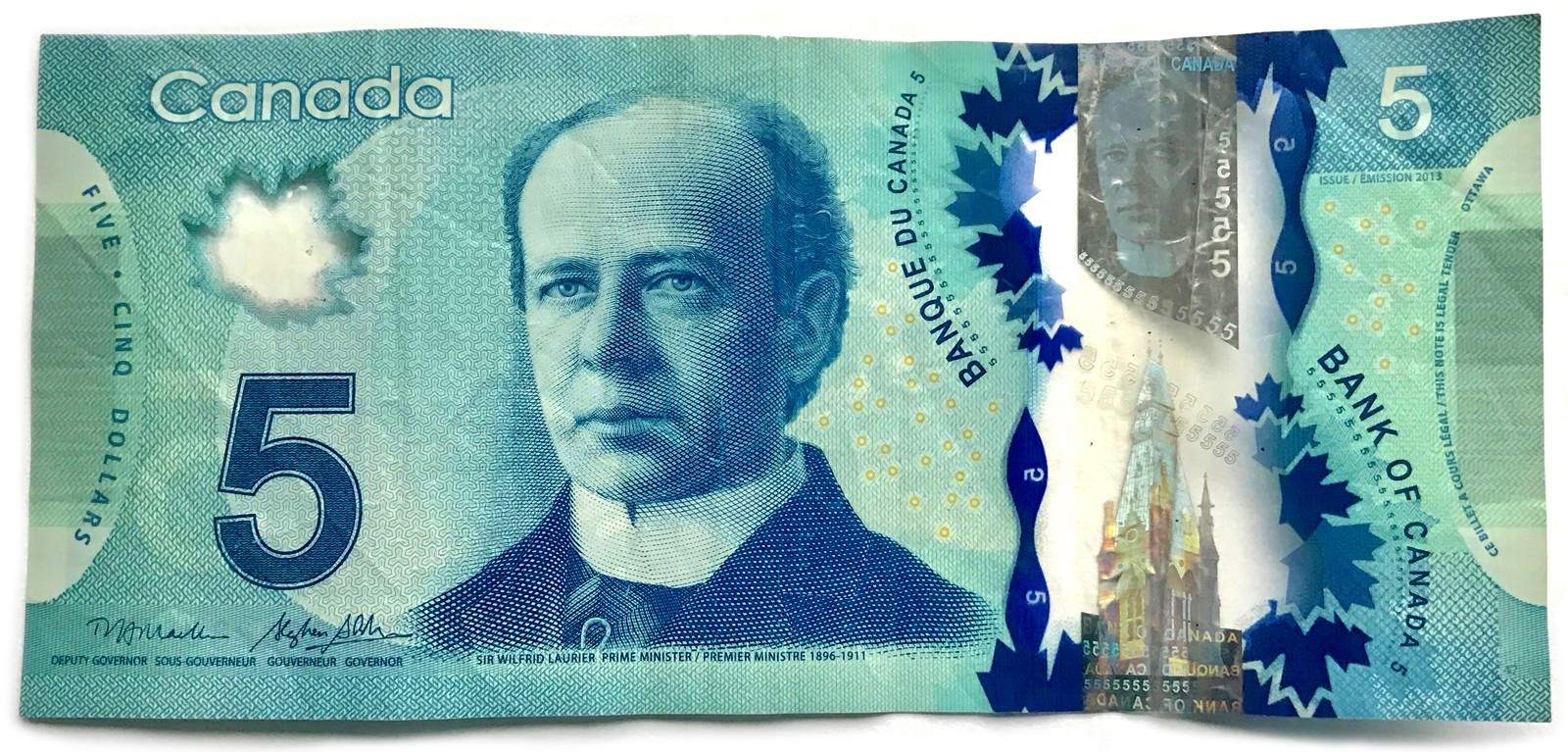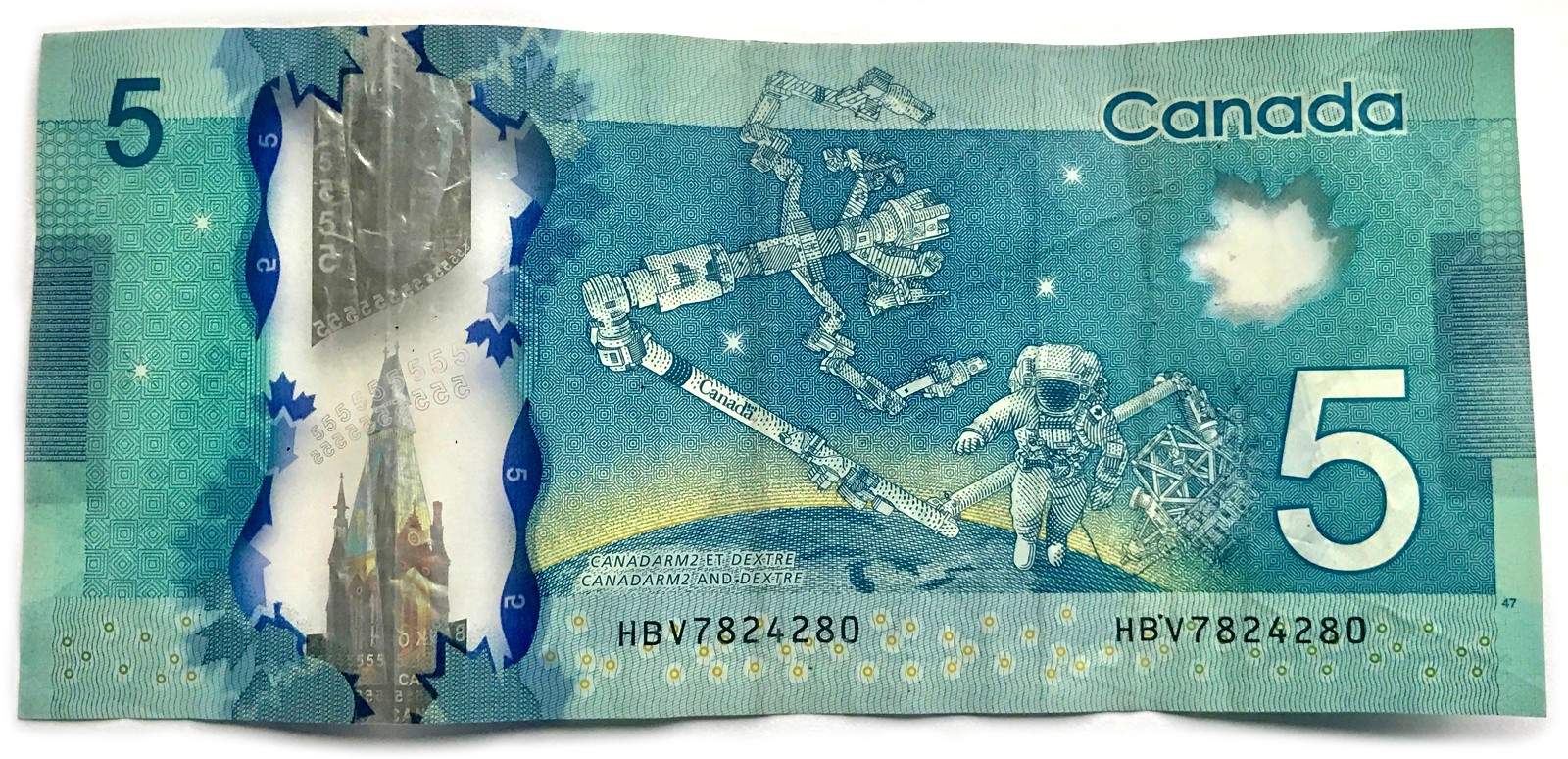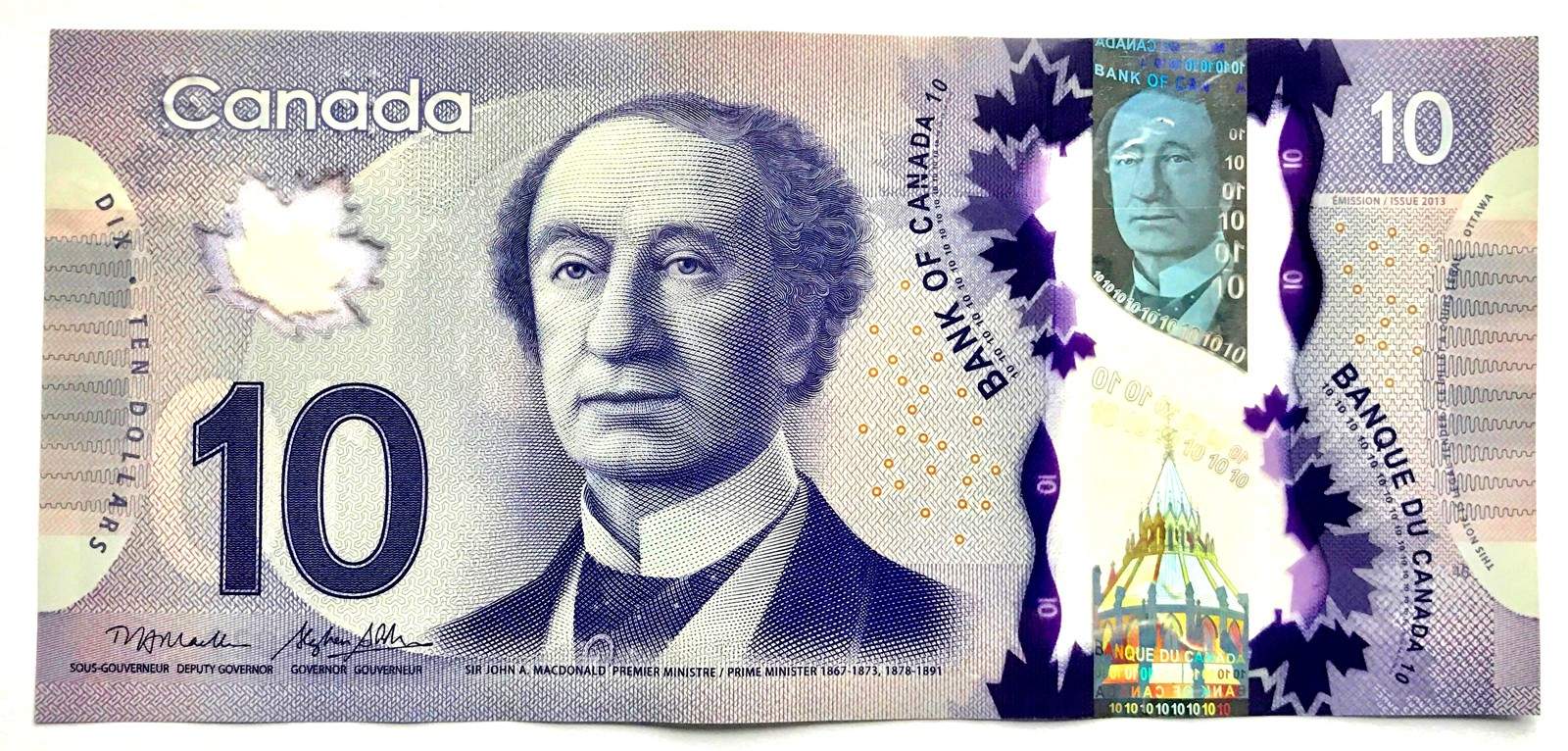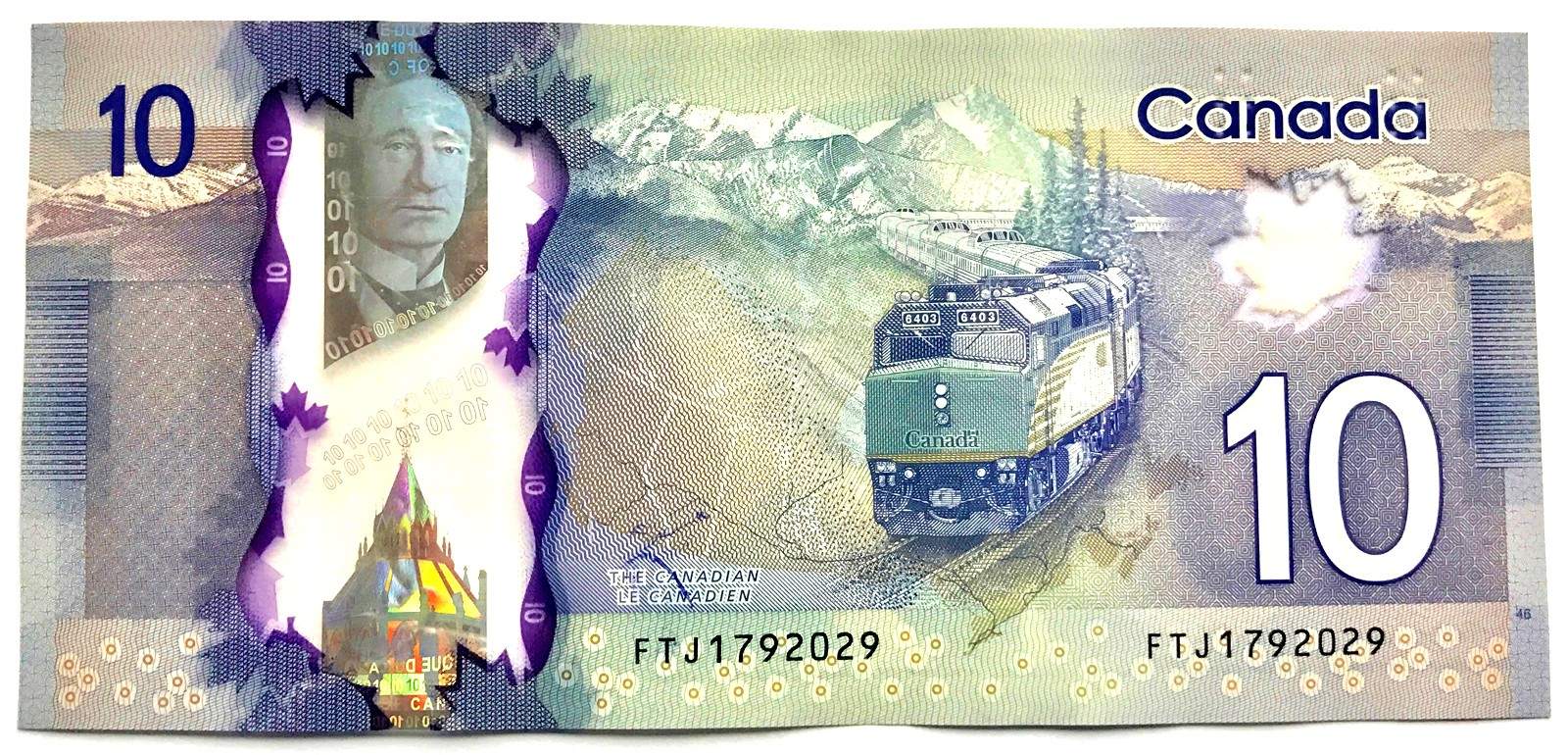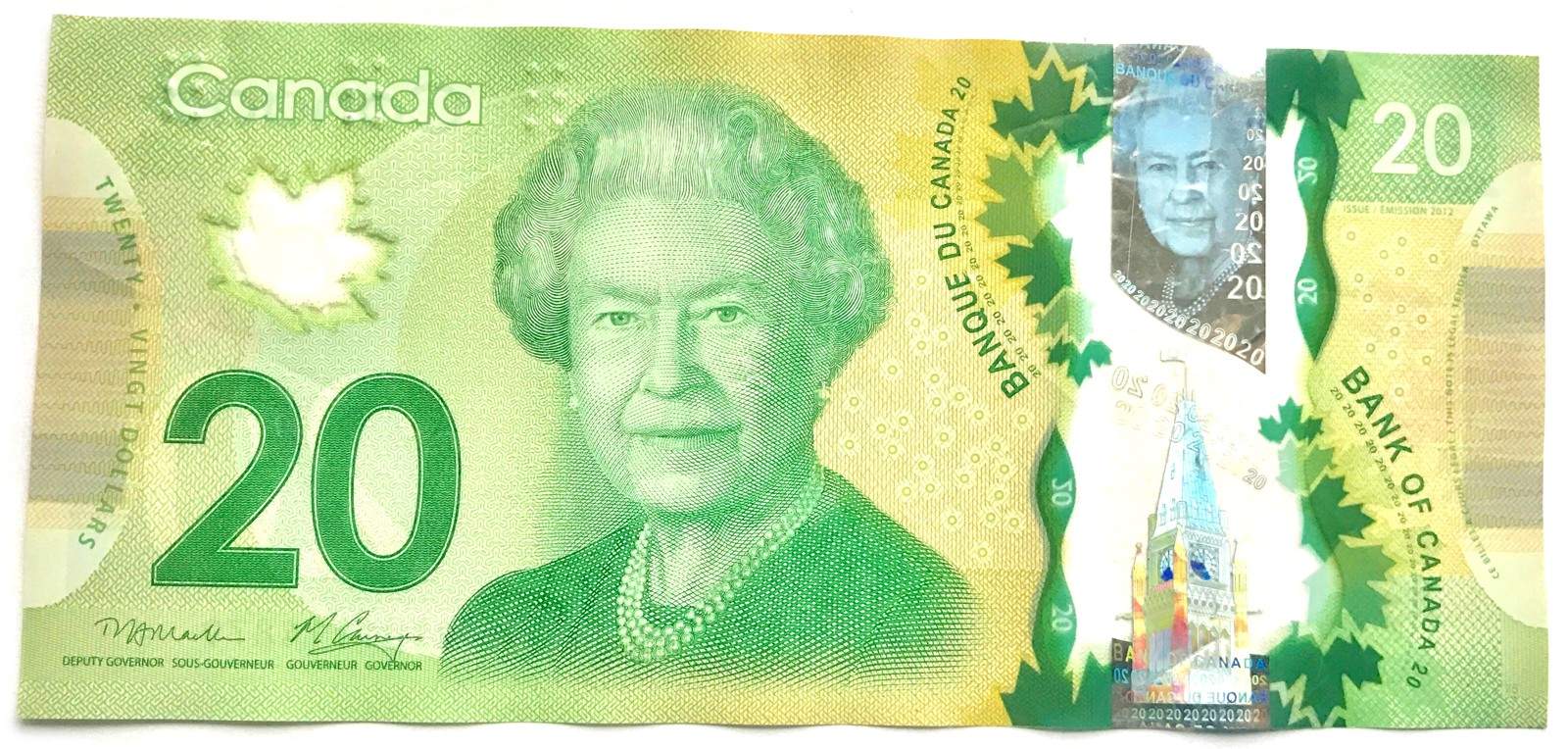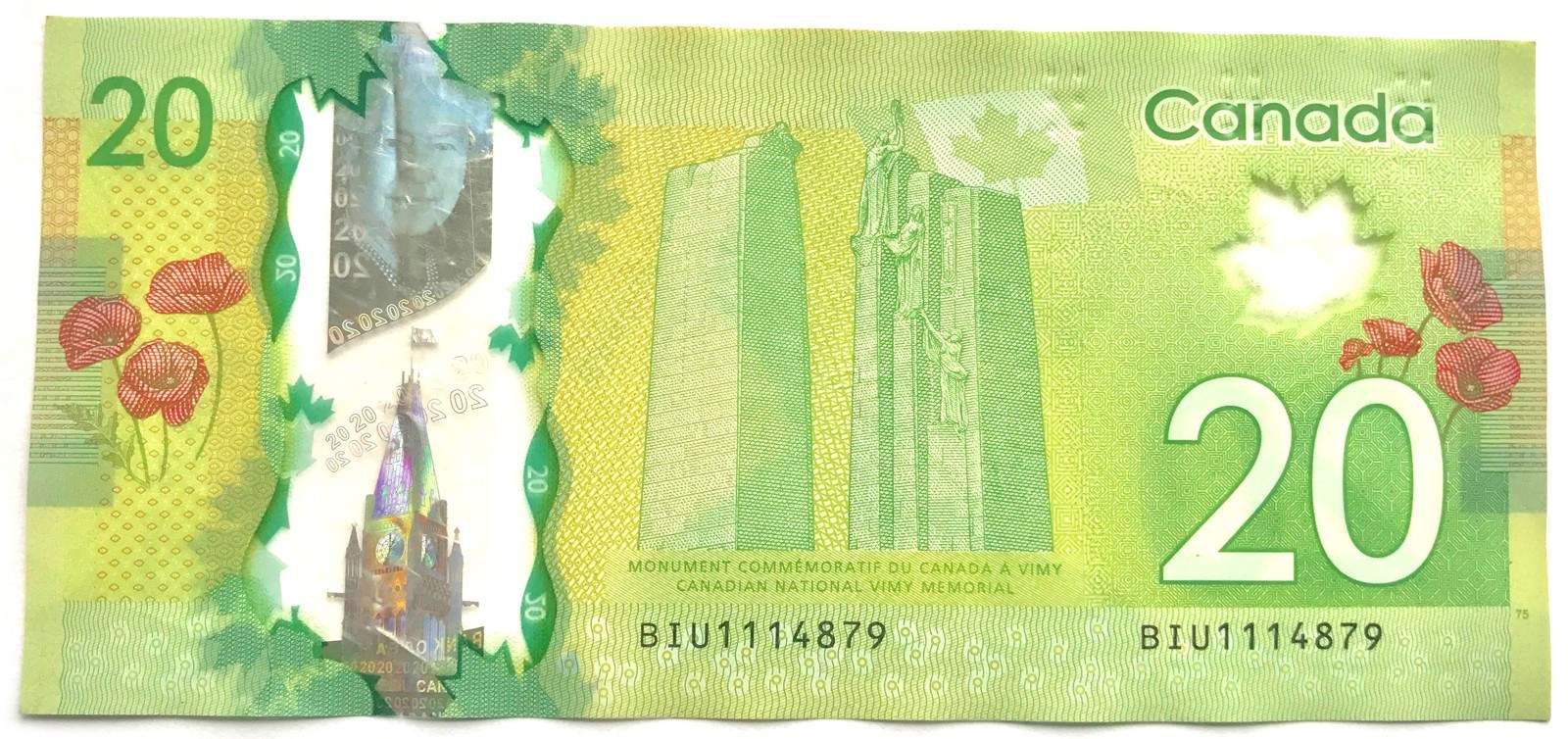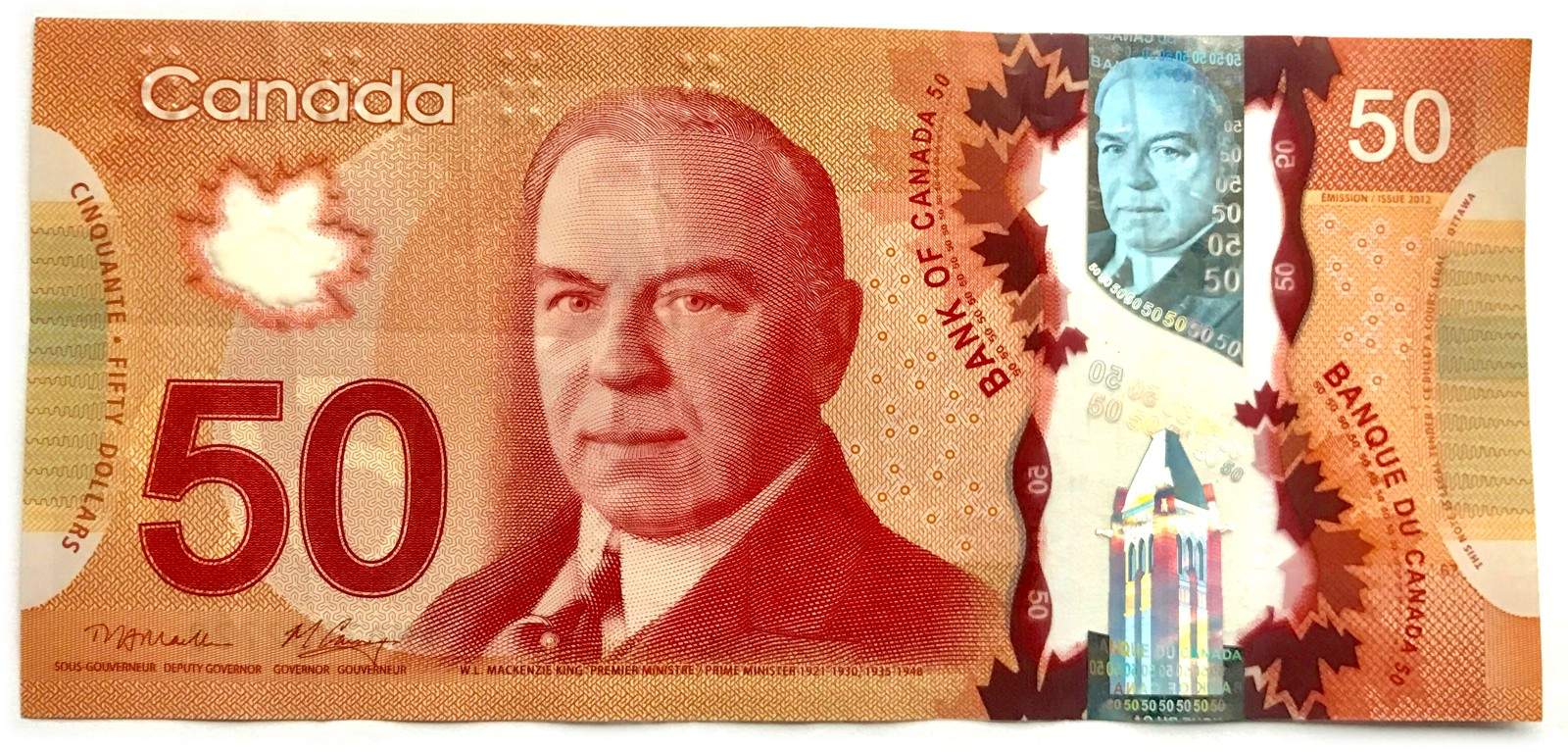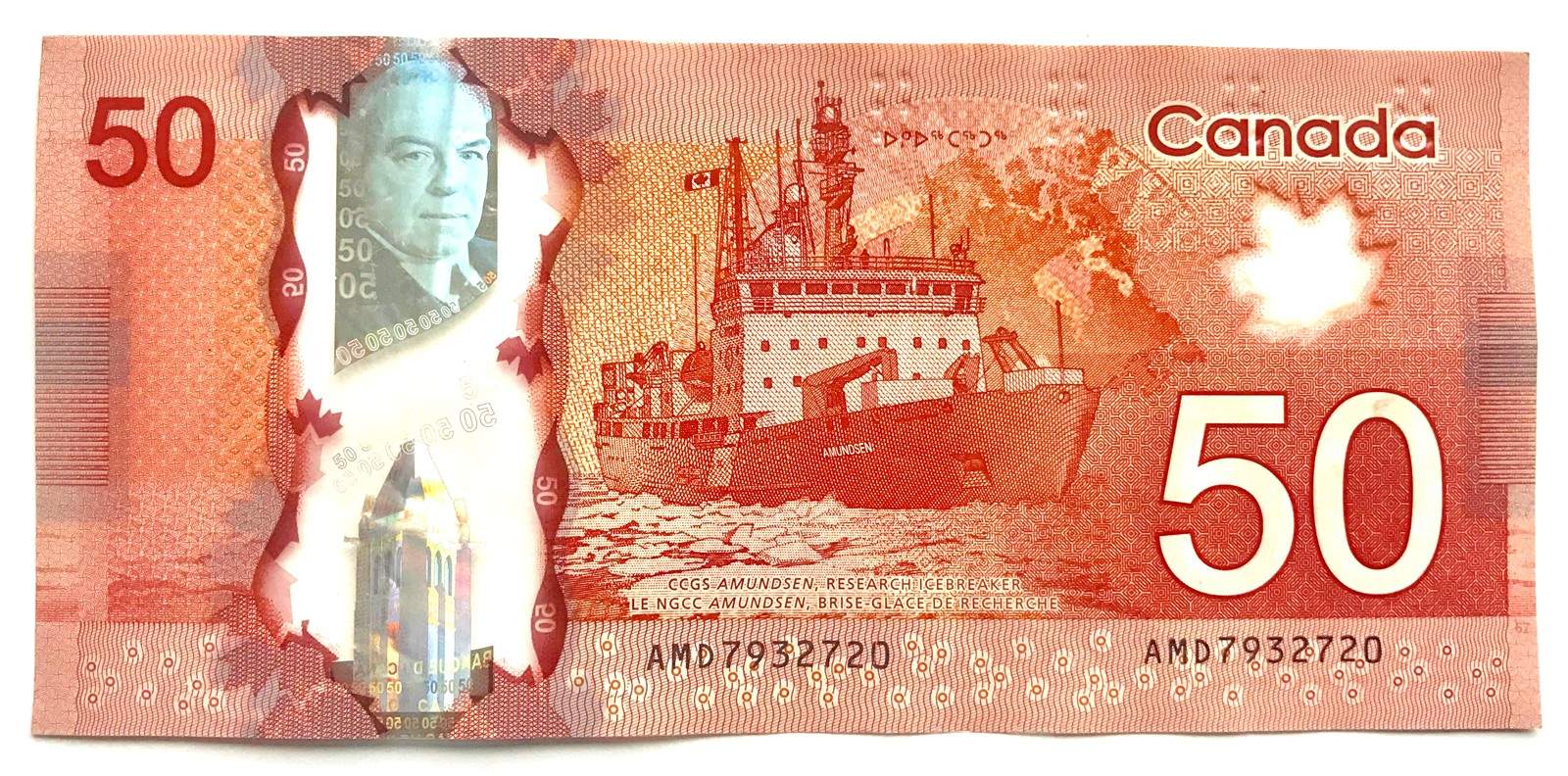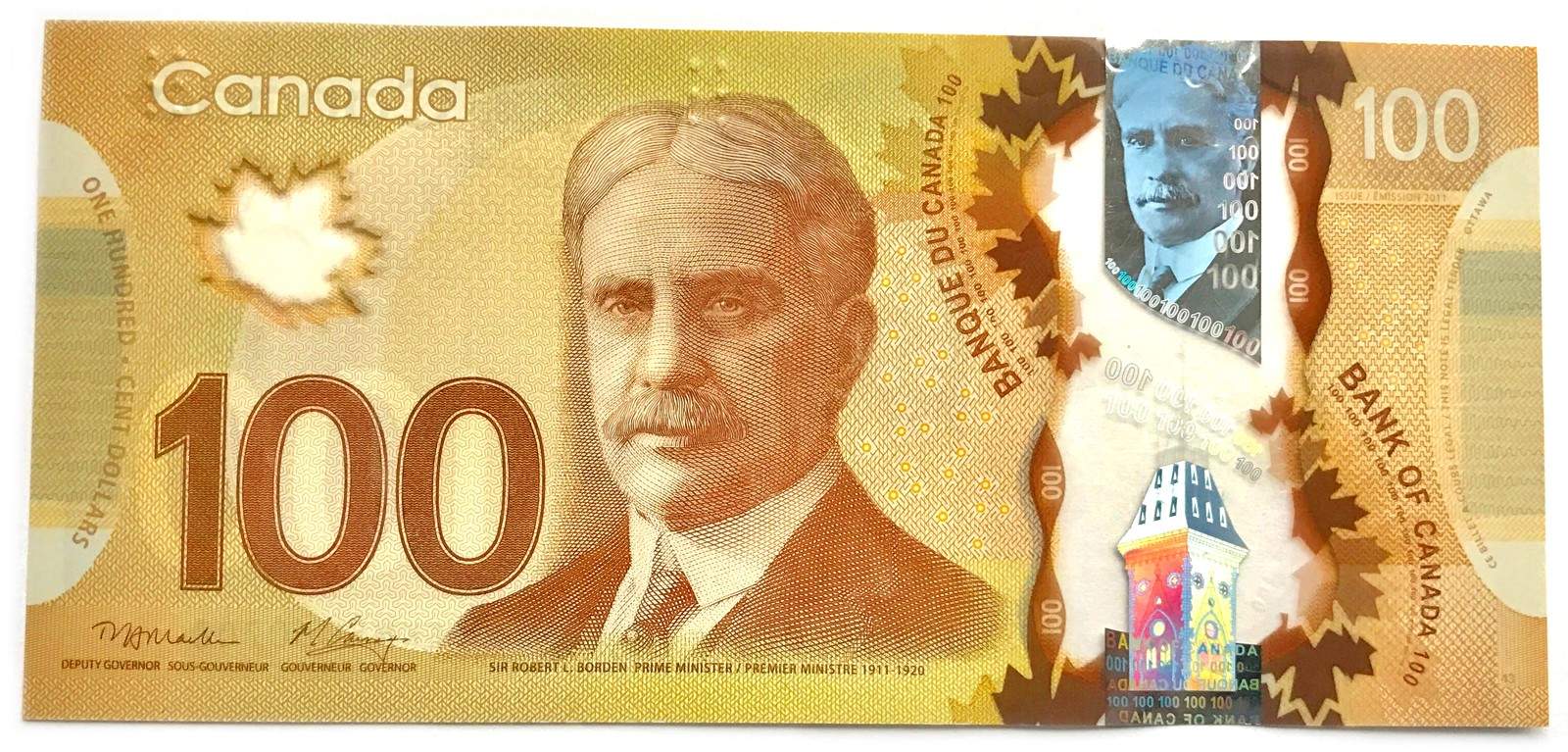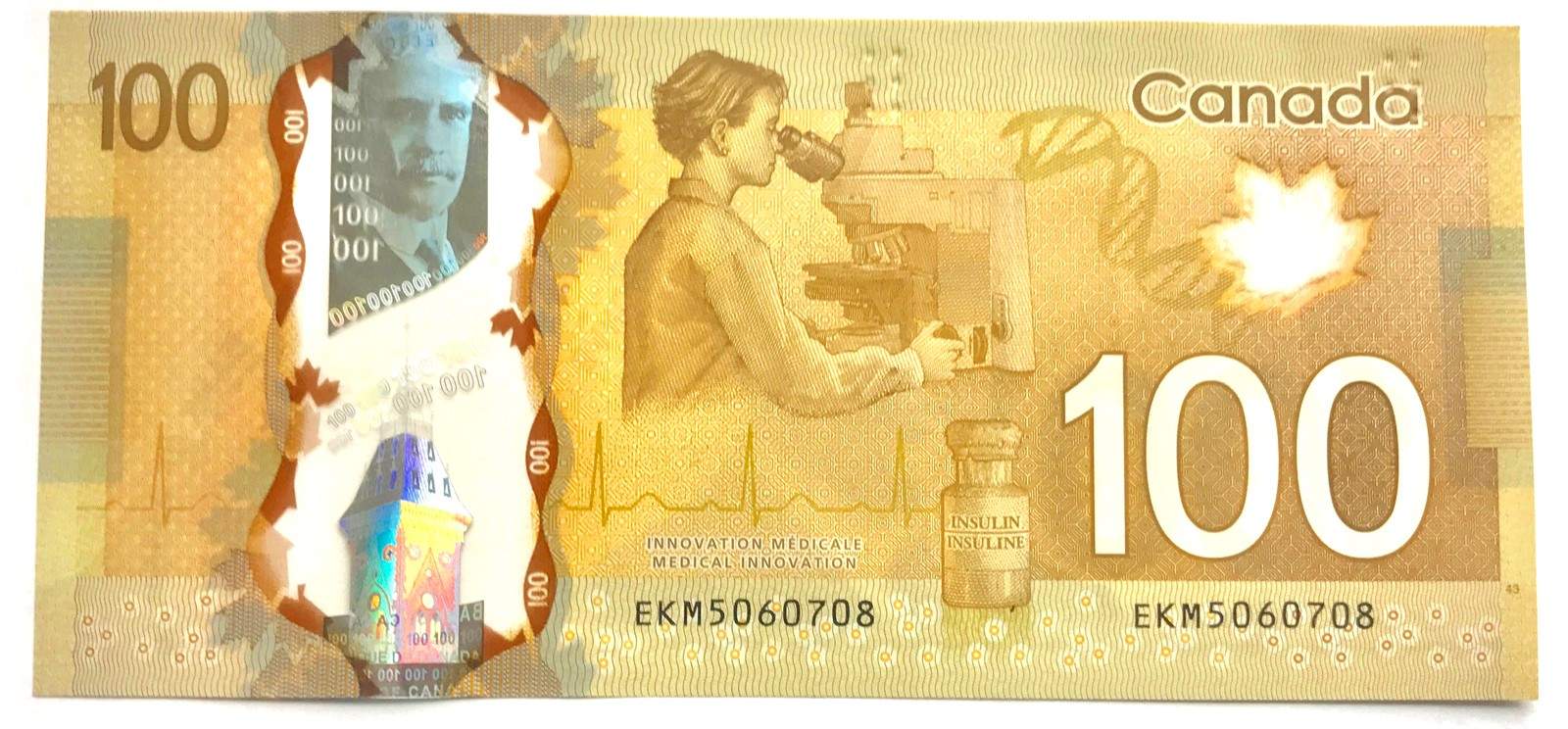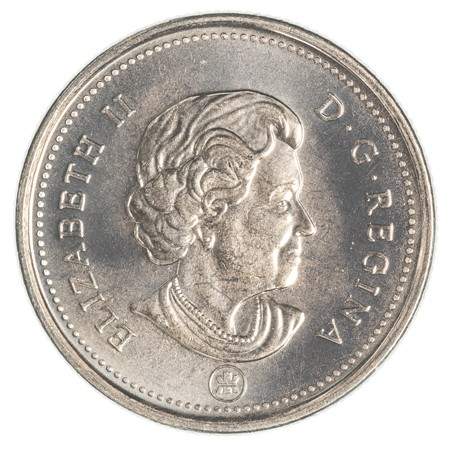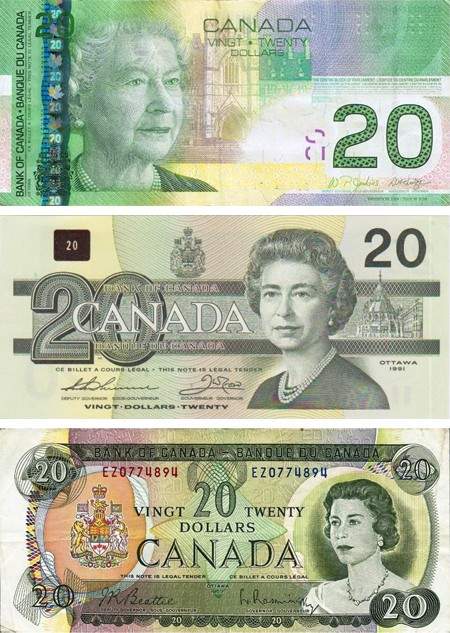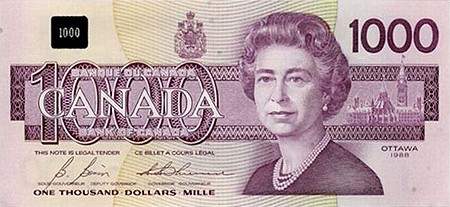Canadian Money
The Canadian Dollar
In early Canadian history, people in Britain’s Canadian colonies used a variety of different currencies to buy things, including British pounds, American dollars, Spanish pesos, and even unique colonial currencies made by local banks and governments. In 1867, the new unified Canadian government gained exclusive constitutional power over currency, and in 1870 it used this power to pass the Dominion Notes Act (now known as the Currency Act) which made the Canadian Dollar ($) the official currency of Canada. A Canadian dollar is made up of 100 Canadian cents (₵).
Originally tied to value of the British pound, and then the price of gold, since 1931 the Canadian dollar has been a so-called “free-floating” currency with a value determined by the international marketplace. Like most advanced countries, Canada also has a national bank, known as the Bank of Canada, that has the power to both print and buy currency in order to help control the currency’s value. In the opinion of the International Monetary Fund, the Canadian dollar is one of the world’s seven reserve currencies known for its stability and reliability even in times of economic uncertainty.
The Canadian dollar is usually measured in comparison to the American dollar. It is almost always worth less, but the exact value can vary quite a bit depending on what’s going on in the world. At its worst, the Canadian dollar may be worth around 65 American cents; at best, it can be very close to par.
Loonie (one dollar)
The Loonie is a large coin made of gold-coloured nickel. There used to be a one dollar bill, but it was phased out in the 1980s. The coin is called a “Loonie” because it has a picture of a loon, the national bird of Canada, on it.
Toonie (two dollars)
The Toonie or Twoonie is a distinctive-looking coin made of two different colours of metal. It replaced the old two dollar bill in the mid-nineties. It has a polar bear on it.
Quarter (25 cents)
The "Quarter" (so named because it's worth a quarter of a dollar) is a silver-coloured 25 cent piece. It depicts a caribou, one of Canada’s beloved antlered animals.
Dime (10 cents)
The "Dime" is the nickname of the 10 cent piece. It's the smallest coin by size, and quite thin. It has a famous Canadian sailboat on it, known as the Bluenose, that was the fastest racing ship in the world for almost 20 years.
Nickel (five cents)
The "Nickel" is what they call the 5 cent piece. It’s actually larger than the dime, which can be confusing. At one time, five cent pieces were made of nickel (hence the name), but today they're made of steel.
Penny (one cent)
The penny is made of copper-plated steel and features the maple leaf, a common symbol of Canada. In 2013, the Government of Canada officially stopped making pennies and is currently in the process of taking them all out of circulation, but completion of this goal is still many years away. Larger business and chains in Canada may not accept penny payments and instead demand customers round cash payments down or up to the closest five cents.
Canadian Coins are produced by the Royal Canadian Mint, which is known among coin collectors as one of the most extravagant and creative coin-producing entities in the world. In addition to the standard-use coins above, the Mint also produces a vast variety of “special edition” coins in a wide variety of denominations and designs, including very high value coins of pure gold, silver, and platinum, as well as gimmicky novelties like full-colour coins, glow-in-the-dark coins, and Marvel superhero coins.
Canadian Paper Money
Canadian paper money, also known as bills, banknotes, or simply notes, is used for larger currency denominations. The current designs, known as the Polymer Series, are actually not made of paper at all, but a sort of thin, flexible plastic known as polymer. Paper bills from the last series — known as the Canadian Journey Series — which began in 2001 and started being officially phased out in 2011, are still sometimes used. Canadian banknote designs usually change every 10 years or so.
5 Dollar Bill
Canada’s smallest bill, the $5, is blue and features a portrait of former prime minister Wilfrid Laurier (1841-1919), the first French-Canadian to lead Canada. On the reverse, it depicts the Canadarm, a robotic arm that was designed in Canada and used on NASA missions between 1981 and 2011.
10 Dollar Bill
The purple $10 bill features a portrait of John A. Macdonald (1815-1891), Canada’s first prime minister and founder of the nation. On the back, there’s a tribute to the cross-country Canadian railroad — Macdonald’s signature accomplishment — and a picture of The Canadian, which is the Vancouver-to-Toronto train service run by VIA Rail, Canada’s state-run railway.
20 Dollar Bill
The $20 has an aged, green portrait of Canada’s monarch, Queen Elizabeth II (b. 1926) on it. She used to be on the $1 and $2 bills, too, back when those existed. The other side features the Canadian National Vimy Memorial, which is a monument in France honouring the more than 3,000 Canadians who died in the Battle of Vimy Ridge (1917), a decisive allied victory in World War I (1914-1918).
50 Dollar Bill
Canada’s red $50 banknote depicts William Lyon Mackenzie King (1874-1950), the famously eccentric prime minister who led Canada through World War II (1939-1945) and much of the early-to-mid 20th century. The reverse depicts the CCGS Amundsen, which is a state-of-the-art icebreaker ship that is used to help the Canadian Coast Guard do research and exploration work in the Canadian arctic.
100 Dollar Bill
Last and most obscurely, we have the Canadian 100 dollar bill, featuring the face of Robert Borden (1854-1937), who was prime minister of Canada during World War I (1914-1918). The back has a salute to Canadian science research, including a depiction of insulin, which was discovered by Canadian scientist Frederick Banting (1891-1941).
A lot of shops in Canada won’t take $100 bills these days, since they’re often counterfeit (or so many sceptical shopkeepers assume). Counterfeiting large bills is a problem in Canada, which is the reason why the government discontinued the $1,000 bill — previously the next largest Canadian bill after the $100 — in 2000 (see sidebar).
More About Canadian Money
